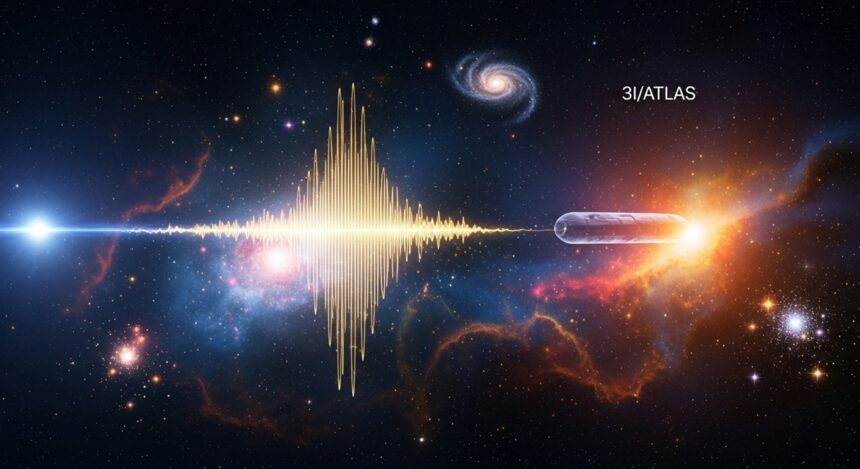In the vast expanse of the cosmos, few mysteries have captured the human imagination quite like the “Wow!” signal. Detected nearly five decades ago, this fleeting radio burst has sparked endless debates among astronomers, SETI enthusiasts, and conspiracy theorists alike. Was it a cosmic hiccup, a natural phenomenon, or—dare we say—evidence of extraterrestrial intelligence?
Fast-forward to today, and a provocative new hypothesis from renowned physicist Avi Loeb suggests a tantalizing connection to the recently discovered interstellar object 3I/ATLAS. While science remains firmly skeptical, this idea adds yet another layer to an already intriguing puzzle.
The Discovery That Shook Astronomy: What Was the “Wow!” Signal?
On a quiet summer night in 1977, the Big Ear radio telescope at Ohio State University was scanning the skies as part of a Search for Extraterrestrial Intelligence (SETI) project. Operated by the university’s radio observatory, this massive instrument—spanning the length of a football field—was designed to listen for unusual signals from deep space. On August 15, something extraordinary happened.
Astronomer Jerry Ehman was reviewing the computer’s printout days later when he spotted an anomaly: a 72-second burst of narrowband radio waves at a frequency of 1420 MHz, precisely matching the hydrogen line—the natural emission frequency of hydrogen atoms, often considered a universal “calling card” for intelligent life. The signal’s intensity peaked at 30 times the background noise, standing out like a beacon in the data. Stunned, Ehman circled the sequence “6EQUJ5” and scrawled “Wow!” in red ink beside it. That simple exclamation mark birthed one of astronomy’s most enduring enigmas.
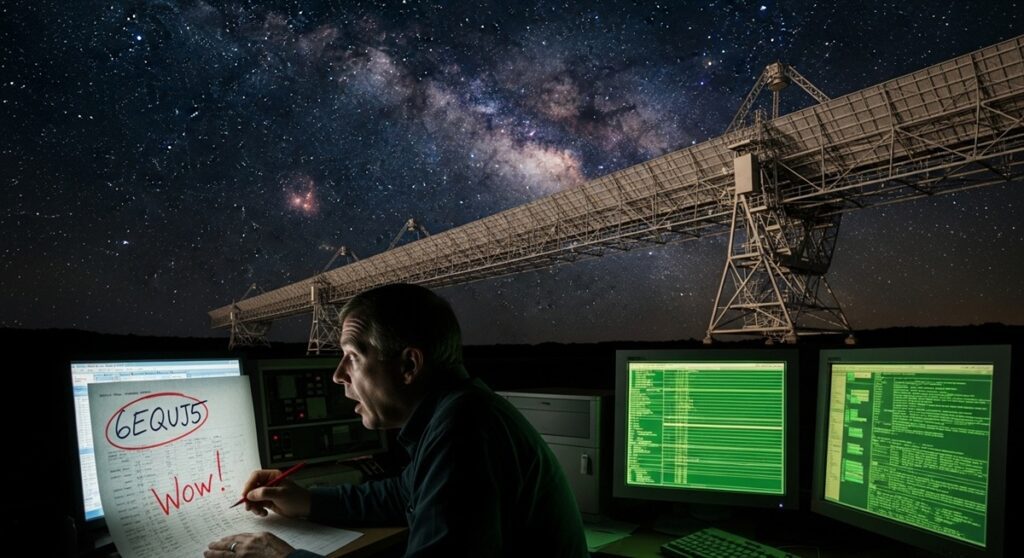
What made the “Wow!” signal so compelling? Unlike random cosmic noise, it was highly focused, lasting exactly as long as the telescope’s beam would sweep across a fixed point in the sky. Its frequency was no accident—1420 MHz is protected for astronomical use because it’s where hydrogen, the most abundant element in the universe, resonates. If aliens wanted to say “hello,” this would be a smart channel to use. Yet, despite its promise, the signal never repeated. Follow-up searches with Big Ear and more advanced telescopes like Arecibo and the Very Large Array turned up nothing.
For years, the “Wow!” signal hovered in limbo, a potential artifact of alien technology or perhaps just a fluke. It originated from the direction of Sagittarius, near the star Tau Sagittarii, but pinpointing an exact source proved impossible. The telescope’s dual-horn design meant it could only narrow the origin to two possible regions in the sky, adding to the frustration.
Decades of Debate: Theories Behind the “Wow!” Signal
Since 1977, scientists have proposed dozens of explanations for the “Wow!” signal, ranging from the mundane to the exotic. Early skeptics suggested it might be terrestrial interference—a satellite, aircraft, or even a reflected Earth signal bouncing off space debris. But thorough checks ruled out known human sources; no satellites were in the right position, and the frequency band is reserved to minimize interference.
Natural astrophysical phenomena soon entered the fray. One popular theory from 2017 posited that the signal came from a comet, specifically 266P/Christensen, which was in the vicinity at the time. Comets release hydrogen gas, and a sudden outburst could mimic a narrowband signal. However, follow-up observations when the comet returned failed to replicate the burst, debunking this idea for many experts.
More recently, in 2024, researchers analyzing archived data from the Arecibo telescope proposed a groundbreaking natural explanation: a maser-like emission from a cold hydrogen cloud stimulated by a magnetar flare. Magnetars are neutron stars with extreme magnetic fields, capable of unleashing bursts of energy that could excite hydrogen atoms into laser-like amplification. This theory accounts for the signal’s narrow bandwidth and intensity, and similar “Wow!-like” signals have been detected in Arecibo data, supporting a cosmic rather than artificial origin.
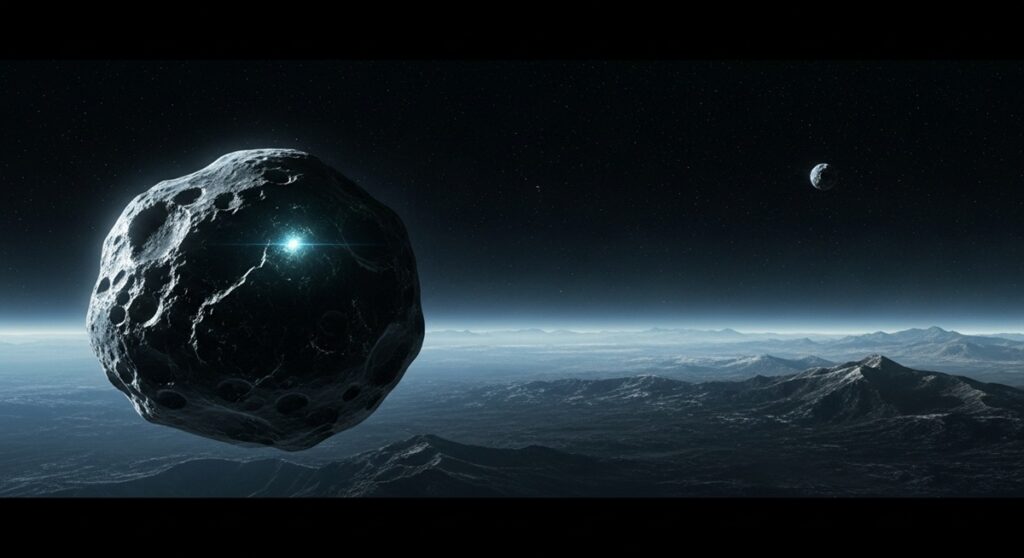
Yet, not all theories lean natural. SETI proponents argue that the signal’s characteristics—its brevity, strength, and frequency—align perfectly with what we’d expect from an extraterrestrial beacon. If it was a deliberate transmission, perhaps it was a one-off ping from a distant civilization, or maybe we just caught a snippet of interstellar chatter. Critics counter that without repetition, it’s hard to rule out anomalies. As one Reddit discussion aptly put it, “If alien communications were common, we’d have heard them again by now.”
The debate rages on, with new data from projects like Arecibo Wow! uncovering fainter analogs, suggesting the original might not be as unique as once thought. But amid these explanations, a fresh hypothesis has emerged, tying the signal to something far more wandering: an interstellar object.
Enter the Interstellar Intruders: A Brief History of Cosmic Visitors
Our solar system isn’t as isolated as it seems. While most comets and asteroids orbit the Sun in predictable paths, a rare few hail from beyond, ejected from distant star systems and drifting through the Milky Way’s voids. These interstellar objects (ISOs) offer snapshots of alien worlds, carrying chemical signatures from their birthplaces.
The first confirmed ISO, 1I/ʻOumuamua, zipped through in 2017. Discovered by the Pan-STARRS telescope in Hawaii, this cigar-shaped rock tumbled erratically, showing no cometary activity but accelerating slightly due to outgassing, fueling speculation it might be an alien probe. Two years later, 2I/Borisov arrived, a more traditional comet with a tail of gas and dust, rich in carbon monoxide, hinting at formation around a cool red dwarf star.
Fast-forward to July 2025, and astronomers announced the third: 3I/ATLAS. Spotted by the ATLAS telescope in Chile, this hyperbolic comet is barreling through at 245,000 km/h, unbound by the Sun’s gravity. Pre-discovery images trace it back to June 2025, confirming its interstellar origins from Sagittarius, the same constellation as the “Wow!” signal.
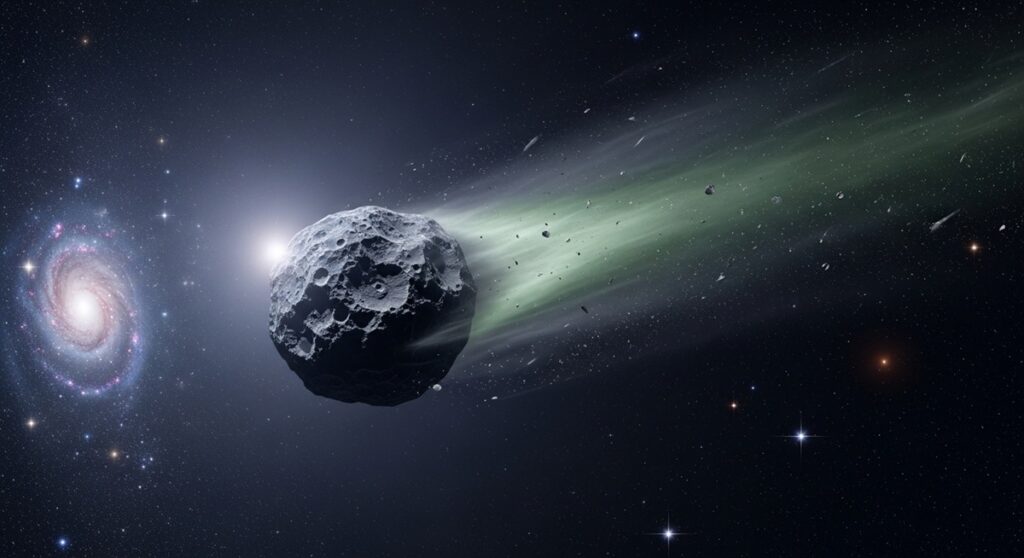
Unlike its predecessors, 3I/ATLAS is massive, estimates peg its nucleus at 5-20 km across, with a total mass potentially exceeding 33 billion tons, far heavier than expected for a typical comet. It’s brightening rapidly as it approaches the Sun, with perihelion slated for October 30, 2025, at 1.4 AU. No threat to Earth, but a golden opportunity for study with Hubble and upcoming telescopes like Vera C. Rubin.
What makes 3I/ATLAS stand out? Its trajectory shows no non-gravitational acceleration like ʻOumuamua’s, making path predictions reliable. Yet, anomalies abound: unusual brightness fluctuations and a potential “planet-forming seed” composition, suggesting it could carry building blocks from an ancient exoplanetary system.
Avi Loeb’s Bold Hypothesis: A Connection Between “Wow!” and 3I/ATLAS?
Harvard physicist Avi Loeb, no stranger to controversial ideas, he famously suggested ʻOumuamua might be an alien sail, has now linked the “Wow!” signal to 3I/ATLAS. In a September 2025 Medium post, Loeb notes a striking coincidence: On August 15, 1977, 3I/ATLAS was about 600 AU from Earth, its sky position just a few degrees from the signal’s origin. The odds of such alignment? A mere 0.6%.
Loeb posits that if 3I/ATLAS harbored advanced technology—a probe or transmitter—it could have emitted the burst. The object’s extreme speed and trajectory, unlike typical comets, bolster this “what if.” Enthusiasts speculate it might be a relic from an ancient civilization, beaming signals as it wanders.
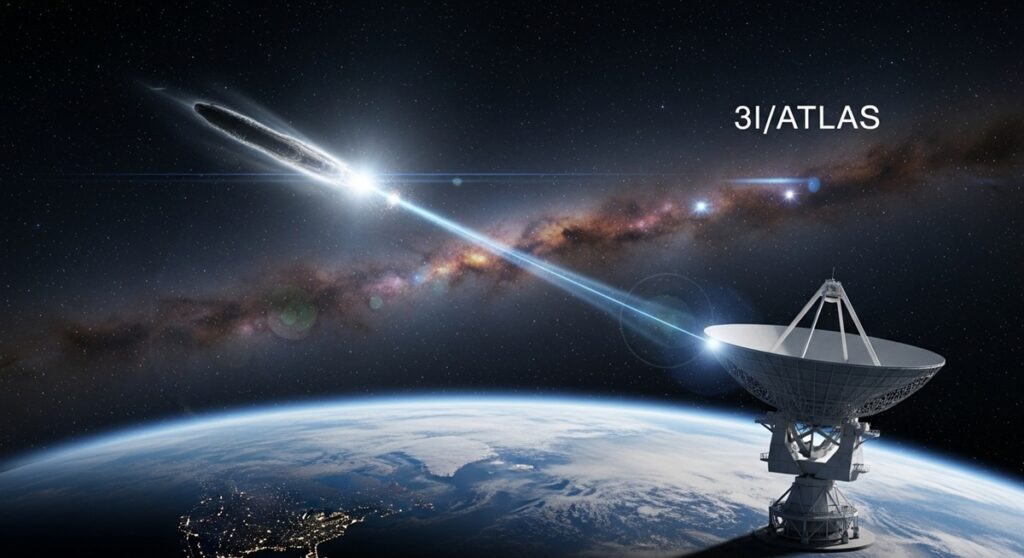
But hold the excitement. Science demands evidence, and here’s where skepticism reigns. The distance—600 AU—would require the signal to carry immense power, equivalent to harnessing a planet’s or star’s energy, far beyond human tech. Modern telescopes, vastly more sensitive than Big Ear, have observed 3I/ATLAS without detecting similar emissions. Why only once? Why no repeats?
Critics like Steve Desch argue such claims overreach, rating 3I/ATLAS low on a “Loeb Scale” of alien likelihood—more comet than craft. Tracing its path backward, simulations suggest origins in a distant stellar nursery, not a tech-savvy society.
Why the Skepticism? Weighing Evidence Against Speculation
The scientific community emphasizes correlation isn’t causation. Coincidences happen in a universe of billions of stars. Past “Wow!” theories, like the comet hypothesis, crumbled under scrutiny. Loeb’s ideas, while thought-provoking, often push boundaries, recall his Oumuamua claims, dismissed by most as natural.
That said, such hypotheses drive progress. They prompt deeper observations of 3I/ATLAS, potentially revealing cometary secrets or even biosignatures. As telescopes like James Webb scrutinize it, we might uncover clues about interstellar chemistry.
The Bigger Picture: What This Means for Our Search for Life
The “Wow!” signal and 3I/ATLAS remind us of the universe’s mysteries. With more ISOs expected—estimates suggest thousands lurk within Neptune’s orbit, these visitors could rewrite our understanding of galactic wanderers. If Loeb’s link proves unfounded, it still fuels curiosity, echoing how one 72-second blip inspired generations.
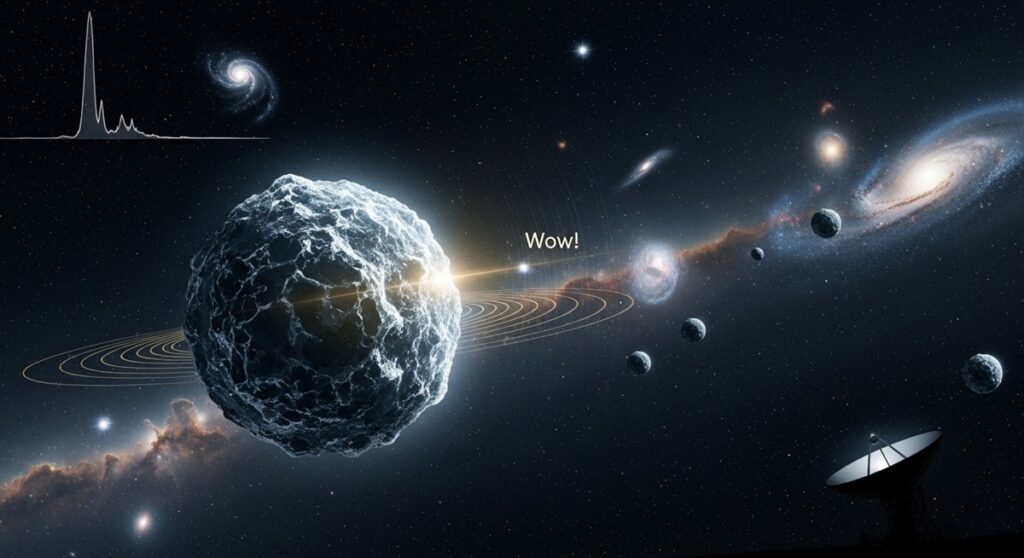
Perhaps future data will demystify “Wow!”, a magnetar flare, a hydrogen maser, or something new. Or maybe, just maybe, it’ll hint at company in the cosmos. Until then, this unproven version remains a captivating “what if,” urging us to keep listening.
Looking Ahead: Future Observations and Unanswered Questions
As 3I/ATLAS nears the Sun, missions like ESA’s Comet Interceptor could pivot for a flyby, though unlikely. SETI searches will intensify, scanning for signals. If nothing emerges, the coincidence joins astronomy’s lore, like ‘Oumuamua’s oddities.
In the end, science thrives on doubt. The “Wow!” signal endures as a symbol of wonder, and 3I/ATLAS adds intrigue. Who knows? Tomorrow’s discovery might connect the dots or reveal an even bigger puzzle.







